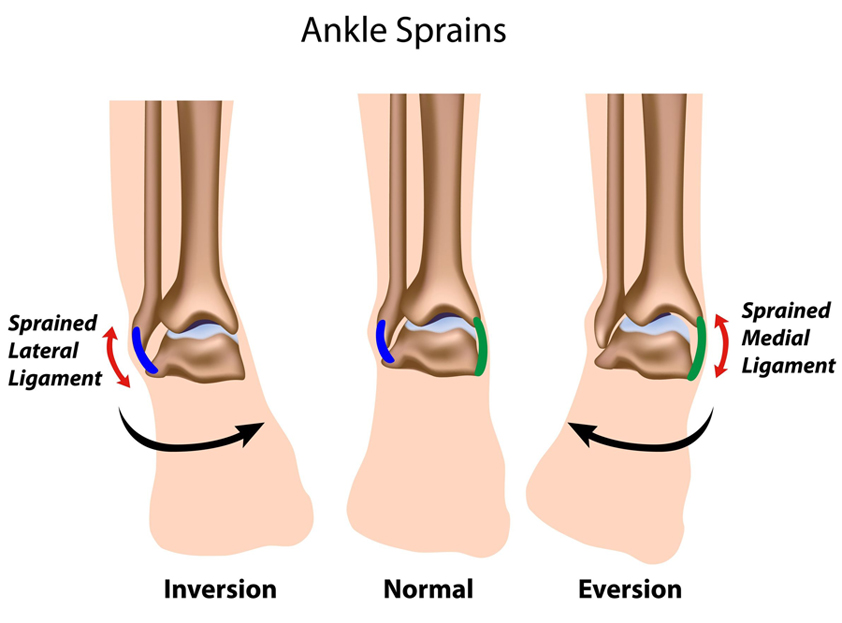How is it treated?
1. Rest. You may need to use crutches until you can walk without pain.
2. 20 minutes every hour or two during the day. Always keep a thin cloth between the ice and your skin, and press the ice pack firmly against all the curves of the affected area.
3. Compression. An elastic compression wrap, such as a tensor bandage, will help reduce swelling. You wear it for the first 24 to 36 hours.
Compression wraps do not offer protection. So you also need a brace to protect your ankle if you try to put weight on it.
4.Elevation. Raise your ankle above the level of your heart for 2 to 3 hours a day if possible. This helps to reduce swelling and bruising.
if you are not taking any prescription pain relievers, you may want to take an over-the-counter pain reliever such as ibuprofen or naproxen to reduce pain and swelling.
Proper treatment and rehabilitation (rehab) exercises are very important for ankle sprains. If an ankle sprain does not heal right, the joint may become unstable and may develop chronic pain. This can make your ankle weak and more likely to be reinjured. Before you return to sports and other activities that put stress on your ankle, it’s a good idea to wait until you can hop on your ankle with no pain. Taping your ankle or wearing a brace during exercise can help protect your ankle. Wearing hiking boots or other high-top, lace-up shoes for support may also help. But use caution. Don’t force your foot into a boot if you feel a lot of pain or discomfort.
If your ankle is still unstable after rehab, or if the ligament damage is severe, your doctor may recommend surgery to repair the torn ligaments.




